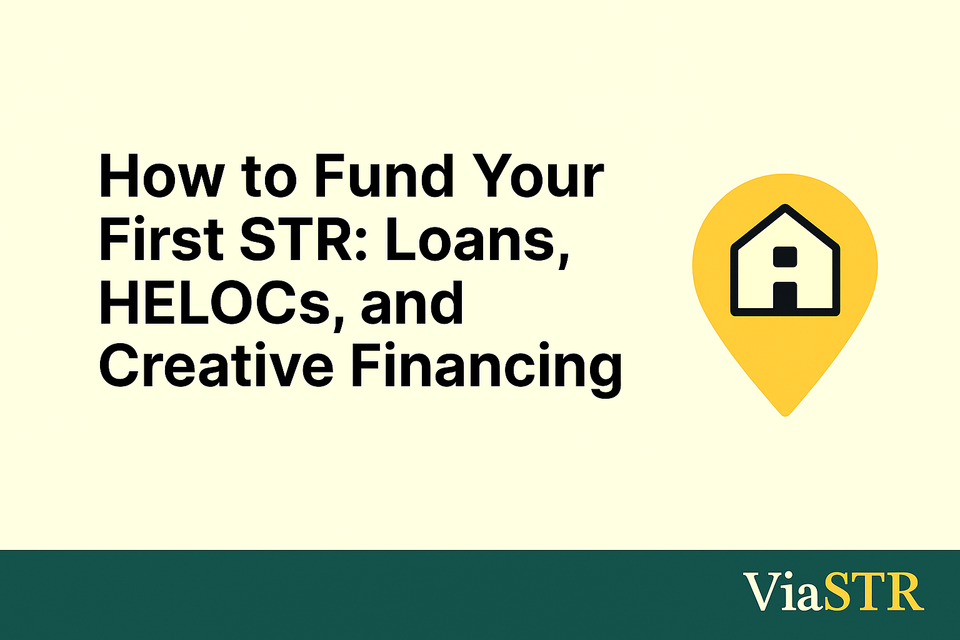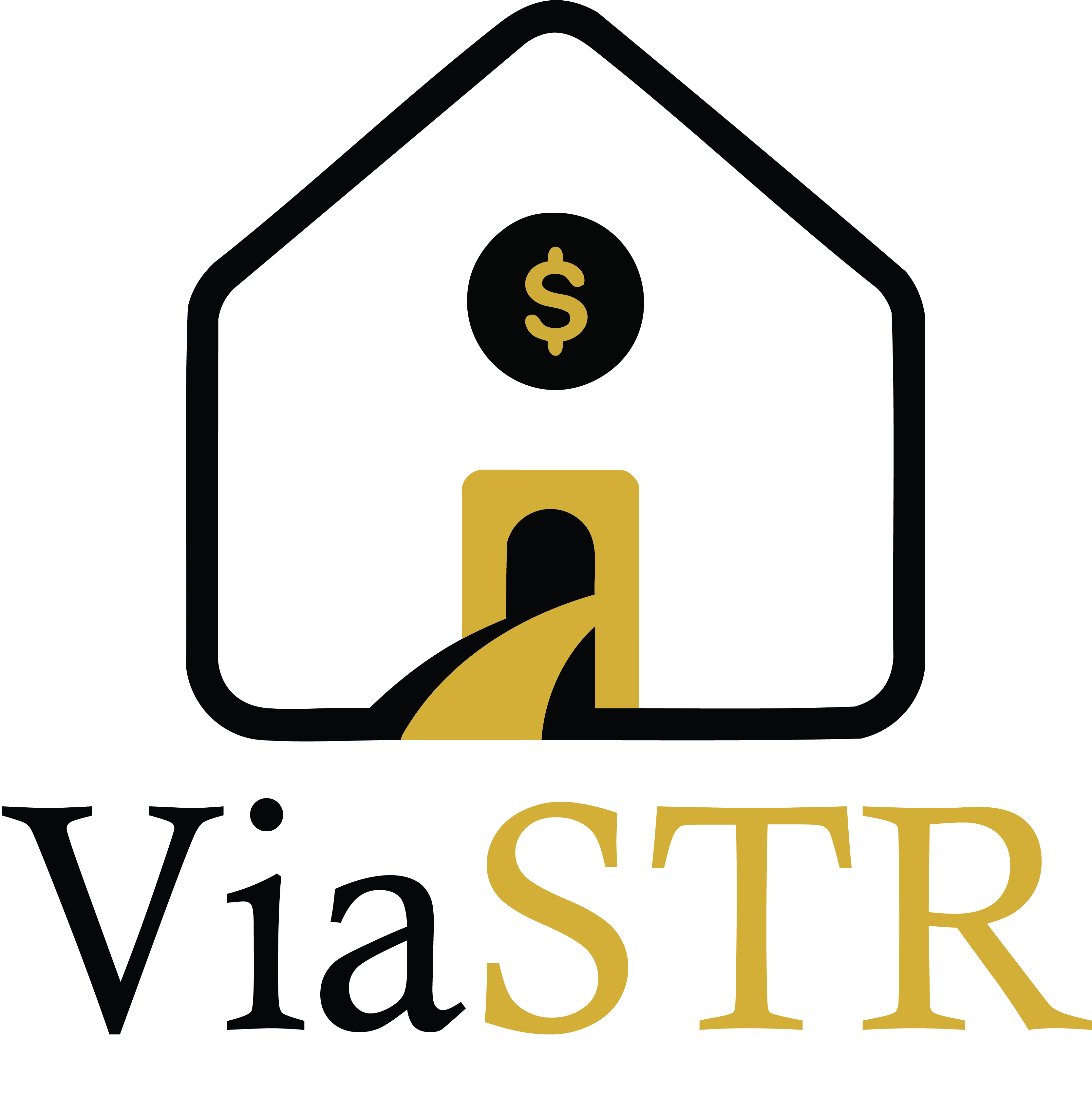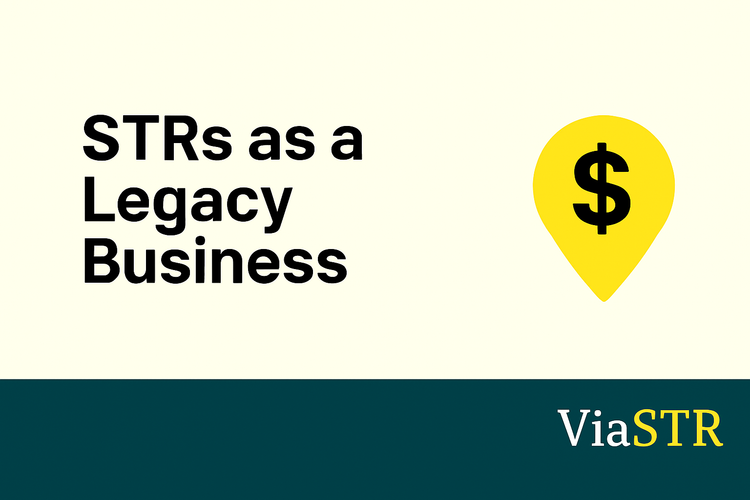How to Fund Your First STR: Loans, HELOCs, and Creative Financing

At a Glance
- Vacation home loans let you start with as little as 10% down if you plan some personal use.
- DSCR loans focus on property income instead of W2 income, perfect for scaling.
- HELOCs unlock existing home equity to fund down payments or furnishings.
- Creative financing (seller credits, partnerships, private lenders) can reduce upfront cash needs.
- The right loan structure determines whether your STR produces strong cashflow or financial strain.
Why Financing Matters for STR Investors
Financing is one of the most critical parts of starting your short-term rental journey. The right loan structure can mean the difference between strong cashflow and financial stress.
As a W2 earner, you may have more options than you realize — if you know where to look. Let’s break down the most common financing strategies for STR investors.
1. Vacation Home Loans
Vacation home loans are often the gateway loan for first-time STR buyers.
Why they work:
- Require as little as 10% down.
- Based on your personal W2 income and credit.
- Allow personal use alongside rental income.
Key requirements:
- You must occupy the property for part of the year.
- You’ll often face slightly higher rates than primary residences.
📌 Example: A W2 earner buys a $500,000 vacation rental with 10% down ($50,000). If they pair it with seller credits or a furnishing package, their cash out of pocket can be far less than expected.
2. DSCR Loans (Debt-Service Coverage Ratio)
DSCR loans are built for income-producing properties and don’t rely on your personal income.
Why they work:
- Approval is based on projected rental income covering loan payments.
- Great for scaling quickly once you have a few STRs.
- Ideal if you want to avoid showing W2 income.
Typical requirements:
- 20–25% down payment.
- Lender review of occupancy, ADR, and expenses (often via AirDNA).
👉 Pro Tip: DSCR loans are often favored by experienced investors who want to build portfolios beyond what traditional lending allows.
3. HELOCs (Home Equity Line of Credit)
If you already own property, a HELOC can serve as your STR war chest.
How investors use them:
- Borrow against equity in a primary home or rental.
- Use funds flexibly for down payments, renovations, or furnishings.
- Pay interest only on the balance you use.
HELOCs often pair well with vacation loans or DSCR loans by reducing upfront cash requirements.
4. Creative Financing Strategies
For ambitious investors, creative financing can fill gaps where traditional loans fall short:
- Seller credits covering closing costs or furnishings.
- Partnerships pooling capital with friends, family, or co-investors.
- Private lenders who fund quickly in exchange for higher returns.
These approaches can lower your out-of-pocket burden and accelerate growth.
Putting It All Together
Your financing strategy should match your goals, timeline, and resources.
- First-time W2 investors often start with vacation home loans or HELOC-backed purchases.
- As your STR portfolio grows, DSCR loans and creative financing options help you scale beyond personal lending caps.
At ViaSTR, we connect investors with trusted lenders who understand short-term rentals, ensuring you get the right structure from day one.
Next Steps
- Previous Post: How to Find a Realtor Who Understands STRs
- Next Post: How to Analyze STR Deals Like a Pro
See Also
- The STR Loophole Explained: Tax Savings Without REP Status
- How to Choose the Right Market for Your STR
- The 6-Phase Journey: How W2 Earners Build Wealth with STRs



